What I Buy and Why
How Real Estate Mogul Sam Charney Built His Eclectic Art Collection From the Ground Up
His passion for street art began in high school, when he worked as an errand boy for a Soho gallery.
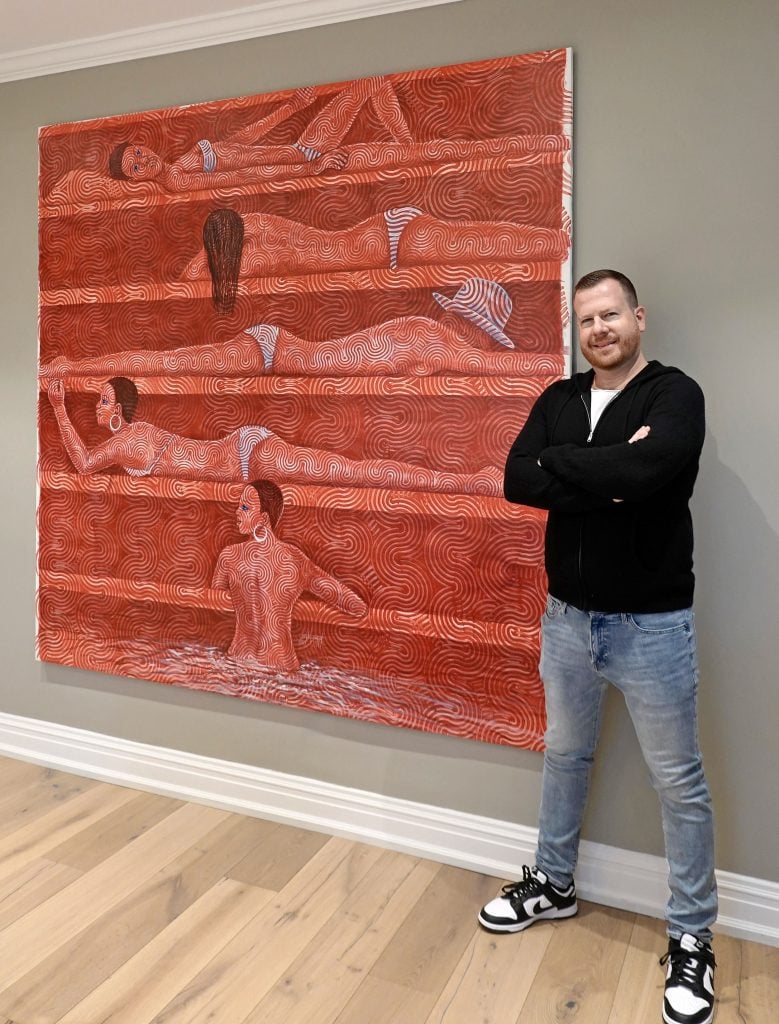
His passion for street art began in high school, when he worked as an errand boy for a Soho gallery.

Lee Carter

Sam Charney founded his eponymous real estate company in 2013, but found art much earlier—in high school, to be exact. He was an errand boy for a Soho gallery where, between painting walls and answering calls, he’d gaze longingly at a particular Basquiat for hours on end. The experience led him to pursue a major in art history in college, with an emphasis on street art. Later, as his development company took off, so did his art collection.
Currently, Charney is developing over two million mixed-use square feet in the outer boroughs, including Williamsburg and Gowanus in Brooklyn. For the latter, he’s coordinating with Arts Gowanus and Powerhouse Arts to install murals by local artists on under-utilized fencing around the construction zone. He also worked with the artist duo FAILE to paint two massive murals on a development in Long Island City. Charney also sits on the boards of both the Brooklyn Public Library and Pursuit, a nonprofit focused on adult education.
Charney’s own collection has evolved substantially, incorporating not only street art pioneers such as Keith Haring, Shepard Fairey, JR, KAWS, Swoon, and (early) Banksy, but also works by Marc Chagall, Louise Nevelson, and Alexander Calder. His latest acquisition, Leap Year by Honor Titus, which he dubs his “pride and joy,” is the culmination of a years-long hunt that took him from Timothy Taylor gallery in Chelsea to Gagosian in Los Angeles and on to Art Basel in Miami Beach.
We spoke with Charney about his passion for street art, his connection to comedian Robin Williams, and the nook at the Met where he’d take his daughter to sit with a Jackson Pollock drip painting, passing along the joy he found with that very first Basquiat.
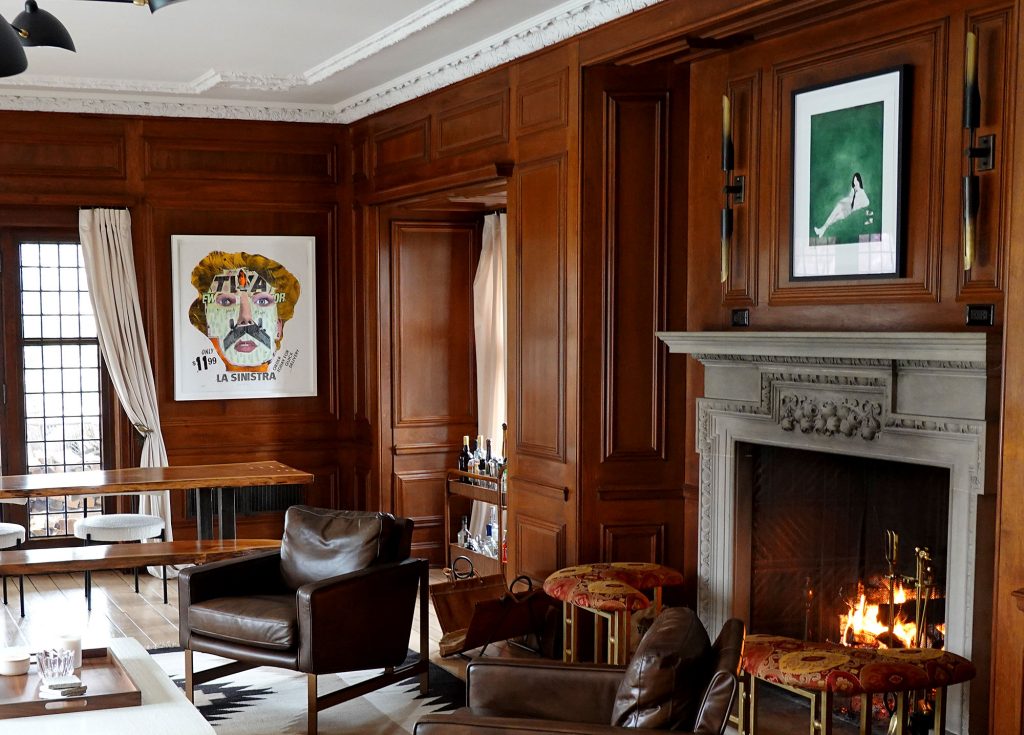
In the living room, La Sinistra by BÄST sits on the left wall and Honor Titus’s Chapel Thrill hangs above the fireplace. Photo: Hanna Botbol. Courtesy of Sam Charney.
What was your first purchase?
Wow, this is a tough question. I think the first meaningful purchase I made on my own was a Shepard Fairey print. Growing up in New York City I developed an early interest and appreciation for street art and the skateboarding scene. Shepard’s work began popping up on lampposts and walls, and I remember being confused but exhilarated by stickers claiming “Andre the Giant has a Posse.” It was art, appropriation, ownership of the street, early guerrilla marketing. I was fascinated by it and started purchasing prints off his website and prints from the now defunct Pictures on Walls, where I was able to acquire some early Banksy works at original release pricing. Since then I have acquired many street/urban artworks from other pioneers of the movement, such as BÄST, FAILE and Swoon.
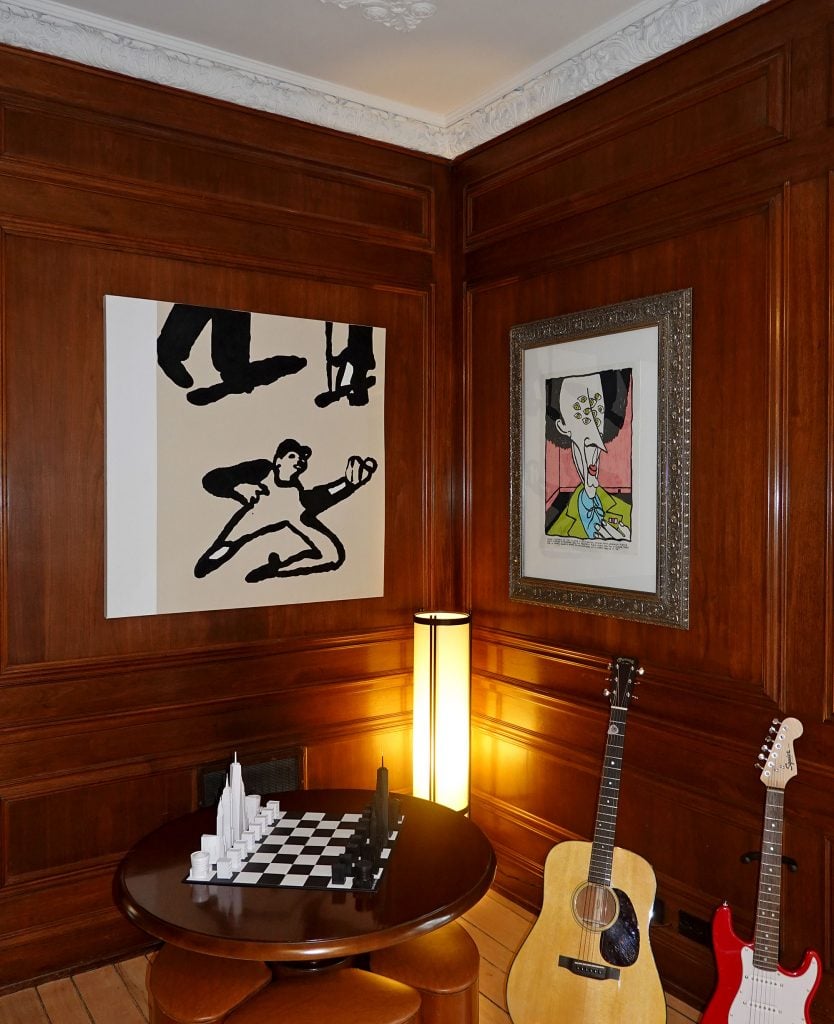
An untitled work by James Ulmer (left wall) and an image of the fictional book author Kilgore Trout by novelist Kurt Vonnegut. Photo: Hanna Botbol. Courtesy of Sam Charney.
What was your most recent purchase?
Arrangement of Lines (2013) by Austin Lee, which I purchased at Phillips in the most recent 20th Century and Contemporary Art auction on December 15. I’ve recently become a big fan of what is starting to be known as the Post-Analog Movement. Artists of this movement, such as James Ulmer, are studying the early digital/post-analog era and forms, most commonly seen in the ’90s and early 2000s. This movement resonates with me as I spent my teenage/formative years as a child of the ’90s in Manhattan.
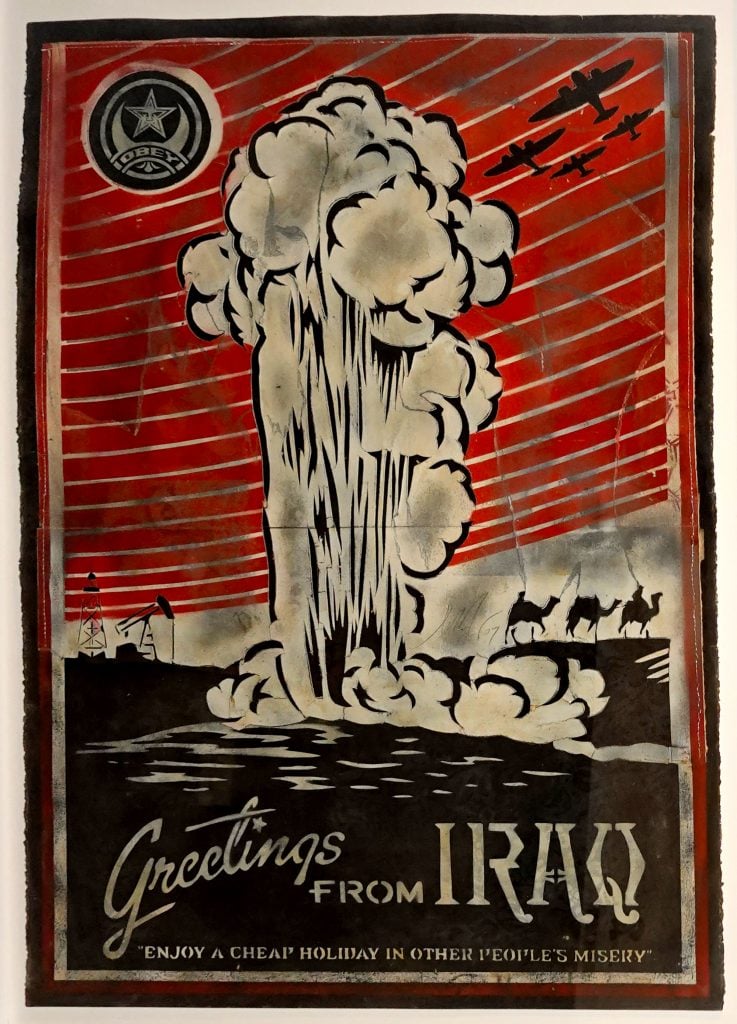
Shepard Fairey, Greetings From Iraq. Photo: Hanna Botbol. Courtesy of Sam Charney.
I understand your collection began with street art. What’s the most significant work you own?
The most significant piece of street art that I own is probably the original stencil used by Shepard Fairey to create the multiples of Greetings From Iraq (2005). I love satirical and political art, and to me this was the quintessential work that defines Shepard’s ability to reference old Soviet propaganda posters in conjunction with modern political discourse. Interestingly, the great and late actor and comedian Robin Williams felt the same way as this piece was part of his cherished collection. I purchased it at Sotheby’s in the Creating a Stage: The Collection of Marsha and Robin Williams sale. It was amazing to see this piece and a few other street art pieces by Banksy in the auction, next to the costume he wore for Mrs. Doubtfire. Game respects game!
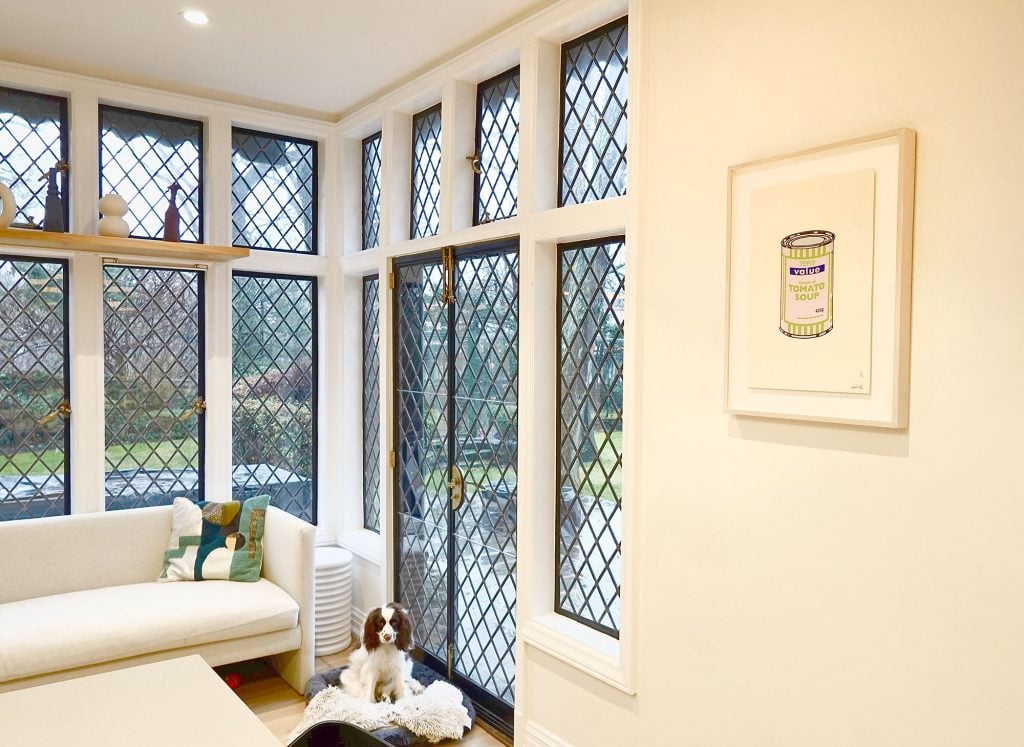
Banksy, Soup Can (lilac, lime and blue). Photo: Hanna Botbol. Courtesy of Sam Charney.
How have you branched out since then?
More recently I’ve started collecting artists from Africa, and Ghana in particular, such as Foster Sakyiamah. I love his style and use of colors. I’ve also started collecting artists from demographics that have been underrepresented and under-appreciated historically, such as female and Black artists.
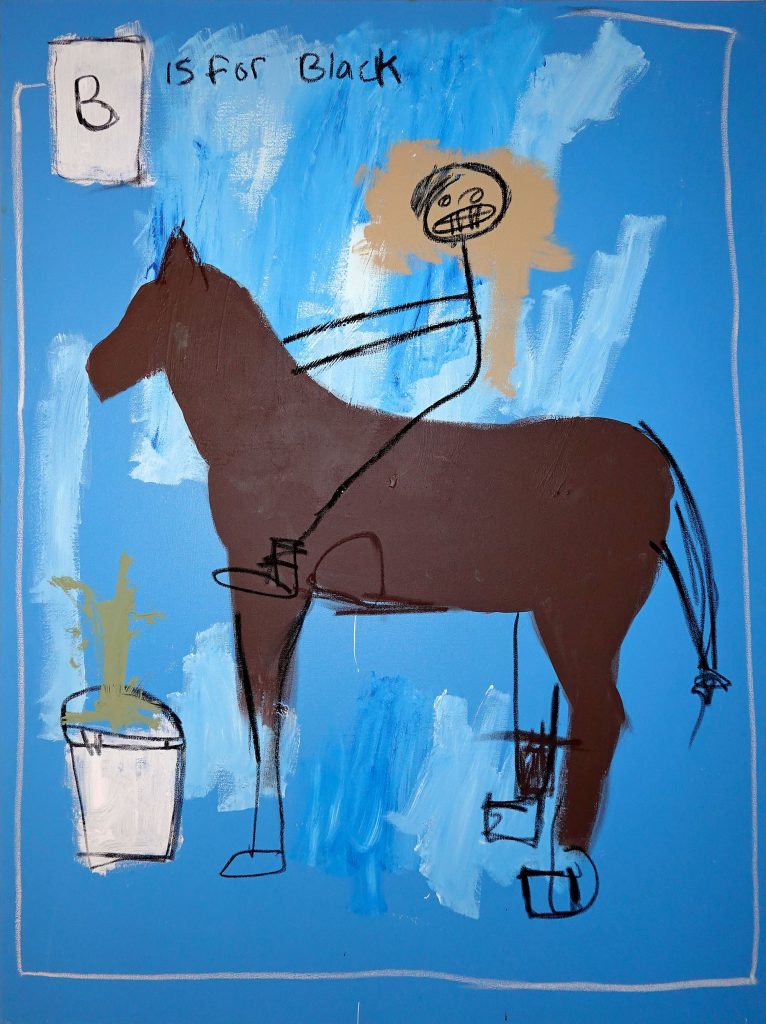
Jammie Holmes, B is for Black. Photo: Hanna Botbol. Courtesy of Sam Charney.
To that end, I acquired a gorgeous Jammie Holmes canvas called B is for Black, a Shaina McCoy canvas, some mixed-media Swoon works, a semi-erotic water color work by Fahren Feingold, a couple of prints by Frohawk Two Feathers, as well the new pride and joy of my collection, a large canvas called Leap Year by Honor Titus.
Am I correct that you acquired Leap Year at Art Basel Miami Beach?
I didn’t acquire it at Basel but it’s certainly part of the story. I had been trying for three years to acquire a work by Honor, ever since I saw his first solo show at Timothy Taylor gallery in Chelsea. About a year ago he showed at Gagosian, and I developed a relationship with his rep there. I tried to get a piece from that show when it opened and the preview was sent, but all the work was spoken for almost instantly.
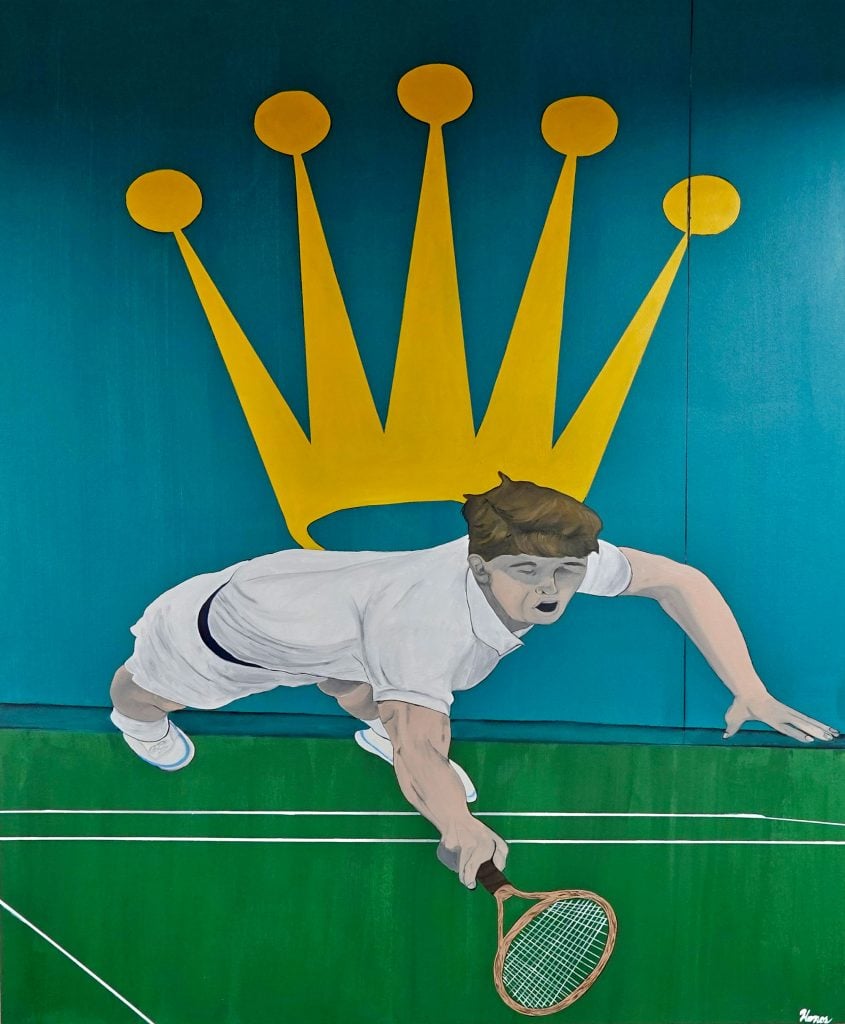
Honor Titus, Leap Year. Photo: Hanna Botbol. Courtesy of Sam Charney.
After that Gagosian made me aware that one piece would be available at Basel, and that it would be mine if a VIP client who was being offered it first should pass. I was prepared to fly down to Miami immediately to show them my interest, but sadly the client took it at first glance. Luckily, an even stronger work was made available to me about a week later and I jumped at the chance. I knew I had to make a quick decision to secure it, and ultimately felt like I would regret it for the rest of my life if I didn’t lock it up. It was hung yesterday and I can’t tell you how much joy it brings me to see it in person. It’s spectacular.
What’s another favorite work in your collection?
I purchased a piece last year by Jason Saager. It’s a Surrealist landscape that I find to be just magical. I met Jason at his studio in DUMBO to acquire the work and he was kind enough to allow me an allocation for my collection. He is insanely talented and the skill in his painting is as impressive as anyone else producing Realism/Surrealism today.
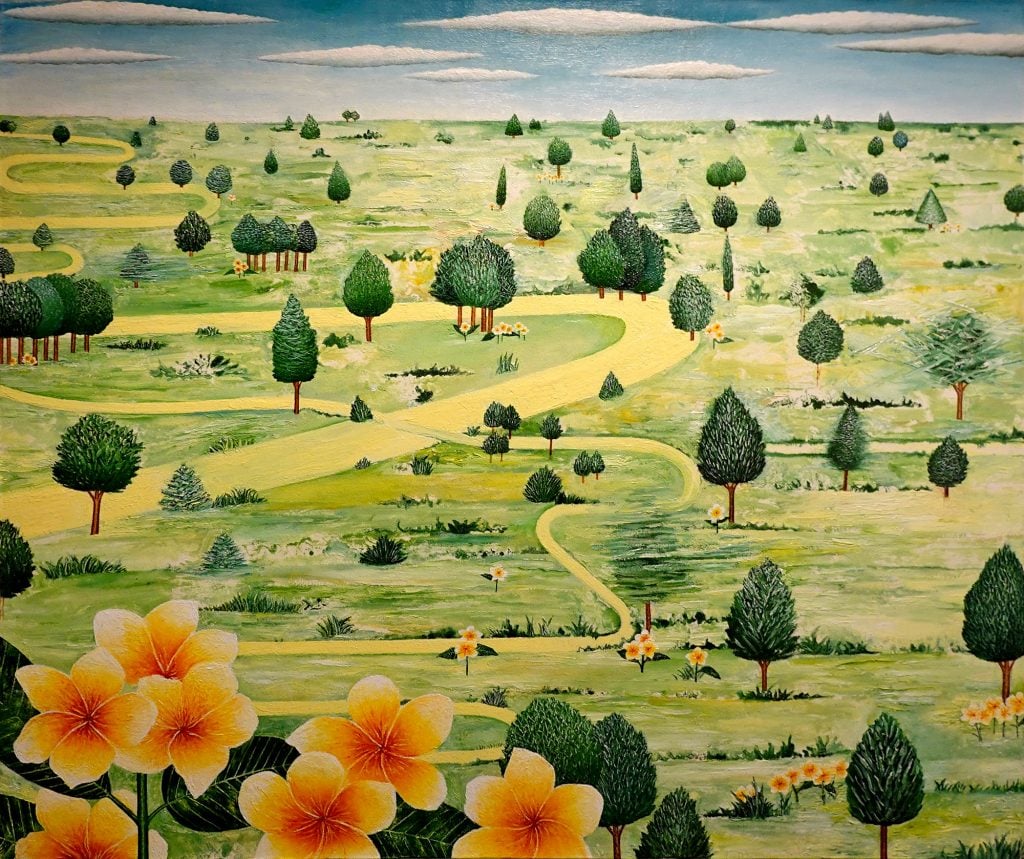
Jason Saager, A Better Place. Photo: Hanna Botbol. Courtesy of Sam Charney.
Which works or artists are you hoping to add to your collection this year?
I’m very hopeful I can acquire a work by Robert Nava, and more works from Jason Saager, Iman Johnson (Dr. Rmdy), JJ Manford, Shaina McCoy, and Fahren Feingold.
What work do you wish you had bought when you had the chance?
When I was in high school I worked part time at a gallery in Soho as a receptionist, errand boy, and miscellaneous handyman painting the gallery in between shows. The gallery was Malca Fine Art, and in 1997 they held a Basquiat, Haring, and Scharf Show. There was never a thought to acquire the piece in question since I didn’t have any real money to spend on art at the time, but there was an incredible Basquiat self-portrait that I used to stare at for hours and imagined owning one day. Needless to say that piece has probably 20xed since then.
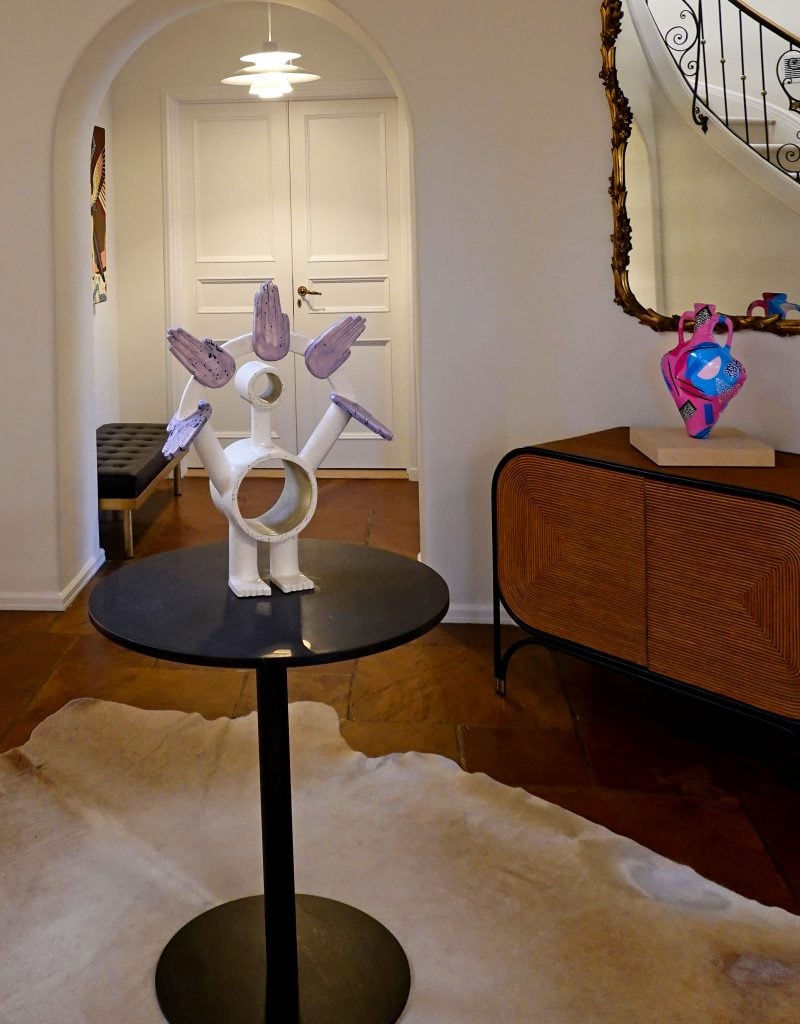
Sculptures by Bruce Sherman and Adam Parker Smith in the foyer. Photo: Hanna Botbol. Courtesy of Sam Charney.
Tell us about working with Arts Gowanus and Powerhouse Arts to bring murals to your construction sites.
One of the biggest things my company, Charney Companies, is known for is bringing art, elevated design and style to all our buildings and projects in New York City. We worked with the artist duo FAILE to create two street-facing 121-story murals on our building, the Green House LIC, which gave us the idea of bringing art to the public by taking an otherwise blank lot line wall or construction fence and creating beauty with it.
We met the Arts Gowanus folks as well as Eric Shiner, the president of Powerhouse Arts, and immediately took to them. My partners in the Gowanus projects and I were enamored with the incredible work they were doing to keep artists and makers in the neighborhood, and we wanted to do our part to help cultivate and preserve the thriving art scene. We teamed up with Arts Gowanus to enter the city’s Art Bridge program, which allows for a developer to deviate from the typical bland green construction fence and use it as a canvas for art. We selected locally based artists such as Demarus McGaughey, David Barthold, Hannah Robinett and Liza Domingues to bring hundreds of feet of construction fences to life, and encouraged other developers to follow suit.

A sculpture by Tom Fruin celebrating Charney Companies’ 10th anniversary. Photo: Hanna Botbol. Courtesy of Sam Charney.
What is the most valuable work of art that you own?
My dear friend and internationally acclaimed artist Tom Fruin created a massive sculpture for me as a gift to celebrate Charney Companies’ 10th anniversary. It currently sits outside one of our conference rooms and every time I look at it I feel a sense of kindred, love and accomplishment. It constantly reminds me to take a moment and appreciate our achievements as a company, and to have gratitude for the friends, family and colleagues who have been so instrumental in my life.
Where do you buy art most frequently?
I try my hardest to buy directly from artists whenever I can. I like the old school experience of touring a studio, getting to know the artist and their mindset behind the work, and seeing where the magic happens. It feels special just to be in the presence of greatness when you are allowed the opportunity to tour a studio. Otherwise I find myself buying from galleries, auctions, and even online.
What work do you have hanging above your sofa?
My sofas are all off walls and have windows or glazing behind them, so nothing is hanging behind my sofas per se, but around my sofas I have gorgeous works by JJ Manford and BÄST. JJ is a local artist based in Gowanus who uses pastels, and the texture of his canvases are very seductive. BÄST, aka Michael Polimeni, was one of the forefathers of the Brooklyn street art scene. He used found objects that washed up on the shores of city beaches to create mixed-media work. He is one of my favorites, and sadly left us way too soon.

JJ Manford, City at Dusk. Photo: Hanna Botbol. Courtesy of Sam Charney.
What is the most impractical work of art you own?
Has to be anything by Tom Fruin. I love him and his work, but hanging anything by Tom is a construction and engineering project unto itself. I dread the thought of ever having to move one of the pieces I own by him.
If you could steal one work of art without getting caught, what would it be and why?
Autumn Rhythm (Number 30) (1950) by Jackson Pollock from the Metropolitan Museum of Art. When we lived within walking distance of the museum I used to take my daughter there all the time. When she was about three or four years old we found Autumn Rhythm and usually would have it all to ourselves as it was in a kind of obscure location within the Met. We would sit and stare at it, allowing ourselves to be engulfed by the depths of the lines, creating a 3D experience out of a 2D canvas. Pollock is one of the first artists who taught me how to see art. His work was instrumental in me deciding to pursue an art history major in college, and to see my daughter appreciate the work as much as I do still holds a special place in my heart.
More Trending Stories:
Art Dealers Christina and Emmanuel Di Donna on Their Special Holiday Rituals
Stefanie Heinze Paints Richly Ambiguous Worlds. Collectors Are Obsessed
Inspector Schachter Uncovers Allegations Regarding the Latest Art World Scandal—And It’s a Doozy
Archaeologists Call Foul on the Purported Discovery of a 27,000-Year-Old Pyramid
The Sprawling Legal Dispute Between Yves Bouvier and Dmitry Rybolovlev Is Finally Over